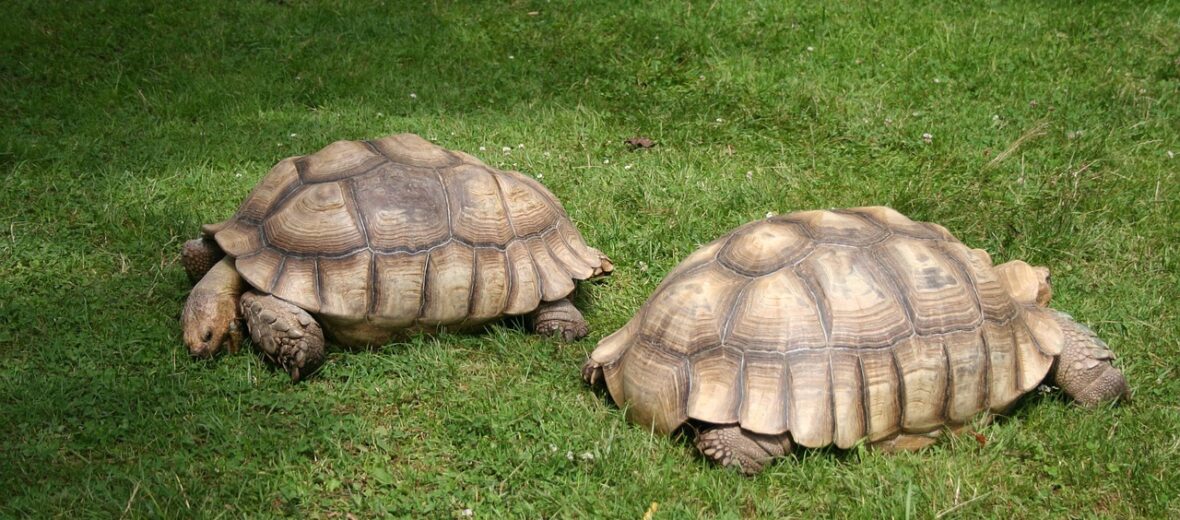
The African spurred tortoise, aka sulcata tortoise or spur-thigh tortoise, is the 3rd largest tortoise after the Galápagos and Aldabra tortoises. Spurred tortoises are the biggest mainland tortoise in the world, with the other 2 tortoises being islanders. They live in the southern outskirts of the Sahara desert, in Africa. These tortoises are very beneficial to the environment in which they live as their diet produces fertilizer that perpetuates seed growth. Unfortunately, due to habitat loss, over-collection for the pet trade, and poaching the sulcata tortoise is listed as Vulnerable by the IUCN. This article is on special request from my friend, David.
First the Stats…
Scientific name: Centrochelys sulcata
Weight: Up to 200 lbs.
Length: Up to 36 inches
Lifespan: Up to 100+ years
Now on to the Facts!
1.) Their shells, like all turtles and other tortoises, are made up of 59 – 61 bones covered by plates termed scutes. These scutes are made of keratin, just like our fingernails.
2.) Unlike what is portrayed in the cartoons, these critters cannot crawl out of their shells. Their backbone and rib cage are attached to their shell.
3.) The top of their shell is called a carapace and the bottom is the plastron. Just like you can feel pain and pressure through your fingernails, so can a tortoise. The next time you get the chance to pet a tortoise, gently scratch the hind portion of their carapace with your finger nails and watch them do a little booty shake.
4.) The name sulcata comes from the Latin word sulcus, which means “furrow”. This is in relation to the deep lines, on their shells.
5.) They get the name spurred tortoise from the 2 – 3 spurs on the inside of their hind legs.
But wait, there’s more on the African spurred tortoise!
6.) Sulcatas are strict herbivores (eat plant matter) eating grasses, succulents, and fruit.
7.) Being crepuscular, these critters are active at dawn and dusk, when it’s cooler out.
Did you know…?
This tortoise, like many other tortoises, can go weeks without food or water. When they do drink they can consume up to 15% of their body weight in water!
8.) During the heat of the day they go into aestivation. This is a type of sleep that saves energy in order to forage at dawn and dusk.
9.) Males tend to be very defensive towards one another. They spend a great deal of time, from birth, trying to flip each other over to show dominance.
10.) Tortoises have been around for approximately 220 million years.
But wait, there’s still more on the African spurred tortoise!
11.) These tortoises are renown for their ability to dig massive tunnels. They can dig burrows up to 15+ feet long and 3+ feet deep. Juveniles, unable to dig their own burrows, typically take up residence in mammalian burrows for shelter.
12.) Mating season occurs from September – November.
13.) Approximately 60 days after mating, the female will dig 4 – 5 depressions, picking 1 in which to lay her 15 – 30 eggs.
14.) The eggs hatch up to 8 months later and yield 2 – 3 inch baby tortoises. They will double in size every 3 years.
15.) Spurred tortoises communicate via croaks, grunts, whistles, ramming, and biting.
Now a Short African Spurred Tortoise Video!
Also, check out the Critter Science YouTube channel. Videos added frequently!
Want to suggest a critter for me to write about? Let me know here.



